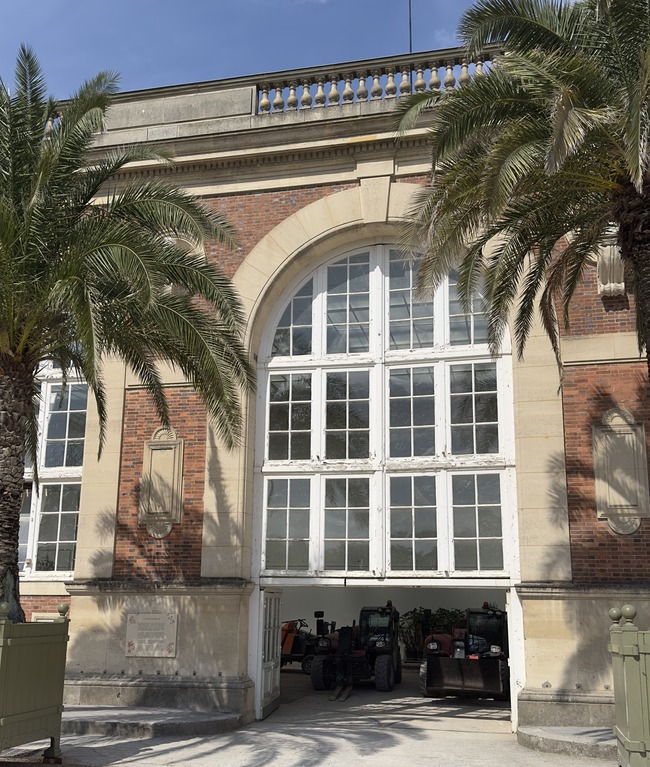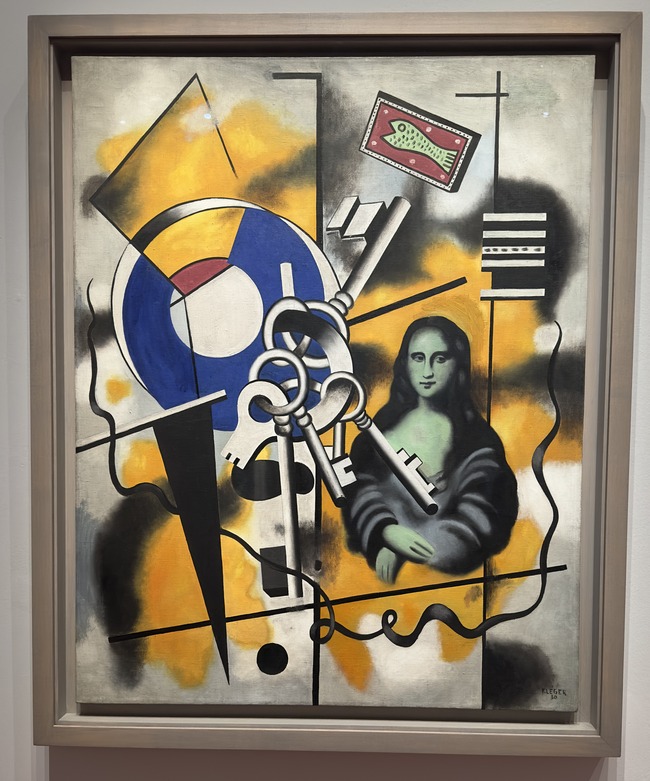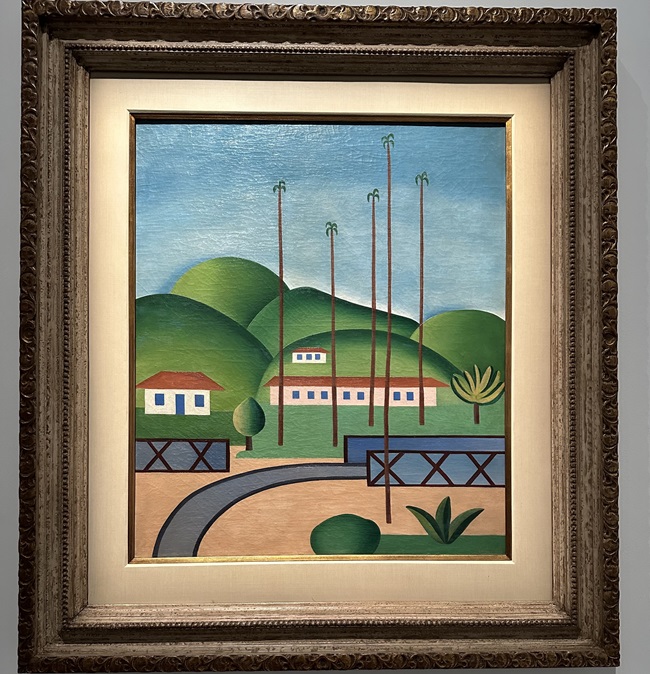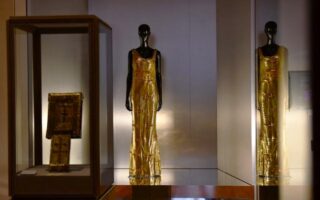Why the Musée du Luxembourg Should Be on Your Paris ‘To Do’ List

- SUBSCRIBE
- ALREADY SUBSCRIBED?
BECOME A BONJOUR PARIS MEMBER
Gain full access to our collection of over 5,000 articles and bring the City of Light into your life. Just 60 USD per year.
Find out why you should become a member here.
Sign in
Fill in your credentials below.
Viewing the exhibitions at the Musée du Luxembourg is always on my “Paris To Do” list because I consistently learn something. I learn about artists’ viewpoints plus their influence on other artists and art trends of which I was unaware. But on my latest visit, I wanted to know about the history of the museum itself, and my knowledge base and appreciation of this small museum located in the Jardin du Luxembourg increased. What started as a place for the French king to show off his art collection then pivoted to current times where France shows off its influence on a variety of artists and art trends.
The Musée du Luxembourg was established in 1750 but was initially located in the east wing of Luxembourg Palace (currently the French Senate) to showcase the king’s art collection that included Titian, Leonardo da Vinci, Rembrandt and about 100 other Old Master artworks. In 1818, it was decided the museum would become the first museum of living artists of the time and featured art by Jacques-Louis David, Delacroix and others.

The Luxembourg Museum in the east wing of the Palace, c. 1848. Auguste Roux. Public domain
The French Senate was appointed the administrator of the Palace and Luxembourg Gardens in 1879 and constructed the current museum building between 1884 and 1886 at 15 rue de Vaugirard. The site was once part of the orangery of Luxembourg Palace, a greenhouse where orange or other fruit trees and plants were protected during winter. It was the perfect place for the first national museum exhibit of Impressionists which showcased Caillebotte’s collection bequeathed to the French state.
The museum was closed in 1937 when the National Museum of Modern Art at the Palais de Tokyo opened but was reopened to the public in 1979. The Ministry of Culture took over and organized exhibitions focusing on French regional heritage and collections from provincial museums.

The current orangery in the Jardin du Luxembourg. Photo: Martha Sessums
In 2000, the Senate assumed full responsibility for the Luxembourg Museum again. Its goal was to showcase French heritage, but 10 years later delegated management of the museum to the Réunion des Musées Nationaux (National Museums Union). This organization is responsible for 34 national museums in France (including the Grand Palais) and manages French exhibitions shown throughout the world offering a view of the country’s artistic style and heritage.
It’s this new focus that makes the museum so interesting. Oui, the Louvre has the French king’s old masterpieces and the Grand Palais hosts grand exhibits including the upcoming Niki de Saint Phalle show with other modern artists in June, but the Musée du Luxembourg holds a conversation with its visitors and focuses on small shows that don’t overwhelm.

Jacques Villeglé art at the “Tous Léger” exhibit. Photo: Martha Sessums
There are many examples of Musée du Luxembourg exhibits that introduce artists in a new way and the current exhibit is a perfect example. Tous Léger highlights Fernand Léger of the 1920s as a New Realist pioneer of 20th century avant-garde art. The exhibit focuses on his influence of later artists like Niki de Saint Phalle, Yves Klein, Keith Haring, Jacques Villeglé and more to have their pop art interact with nature and life. Often, emblematic images are used to show the changes of the modern world and question progress.
An example is La Joconde aux clés, painted in 1930 by Léger. It was a time of change and the ordinary keys suggest a modern society that mocks the iconic Renaissance image. Yet, what does Mona really think about modern society and are these keys really works of art? With that question in mind, it becomes easy to see Léger’s influence on the other artists in the exhibit and how they merged life and art to elevate the mundane stuff of their time into works of art. From Jacques Villeglé’s torn street posters to de Saint Phalle’s oversized colorful statues to Haring’s classic hands-up characters popping out of a shell to Yves Kline’s epoch blue color, their art questions yet celebrates a new era.

La Joconde aux clés, Fernand Léger, 1930. Photo taken at the exhibit by Martha Sessums
What did I learn? That a 1920s French artist captured pop and street art in frames long before other artists created it frameless on walls along the street, or as garishly costumed statues, or in single colored squares. Léger’s style influenced street artists around the world.
Another exhibit was Tarsila do Amaral, a Brazilian artist who trained in Paris in the 1920s. She returned to Brazil and became a central figure in Brazilian modernism. The art exhibited showed the Cubism style learned in Paris blended with traditional Brazilian style. The result was colorful, creative pictures of people, bugs, and even the Eiffel Tower. The lesson learned: artists blend and create from all they learn and see, and the best stay strong and true to what influences and inspires them.

Tarsila do Amaral, Palmiers, 1925. Photo taken at the exhibition by Martha Sessums
Other past shows were Léon Monet, the brother of Claude, which told the story of Léon’s support of his brother and the key role he played in his brother’s career and promoting the Impressionists. Pioneers was one of the first exhibits focusing on women artists but also in architecture, dance, design, literature, fashion and scientific discovery. Many women artists gave women pioneers a face. The Vivian Maier exhibit provided exposure for the US photographer and set her place in the history of photography. And the Women Painters, 1780 – 1830 exhibit illustrated how the increasing number of women in fine arts were linked to the changing business of art production along with changing tastes and social practices relating to art.
And when finished viewing any exhibit, walk the rich grounds of Luxembourg Gardens, or sit in the garden’s many green metal chairs next to the current orangery and think about or discuss what was learned. Or stop by Angelina’s, the small café next to the entrance, and enjoy a cup of coffee or hot chocolate while musing over newfound knowledge. Just be sure to go to the next exhibit at the Musée du Luxembourg to be influenced by learning something new.
DETAILS
Musée du Luxembourg
19 Rue de Vaugirard, 6th
Tel: +33 (0)1 40 13 62 00
Open every day from 10:30am to 7pm. Late closure on Monday evenings at 10pm.
Full-price ticket is €14
Lead photo credit : The front of the Musée du Luxembourg. Photo: Martha Sessums
More in Jardin du Luxembourg


